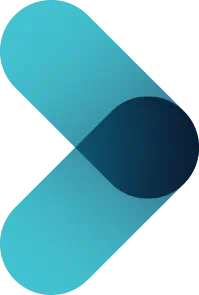GIVE NOW before 2025 ends—your gift will be doubled to help children in need. Click here to 2x your impact!

Ranked nationally in pediatric care.
Arkansas Children's provides right-sized care for your child. U.S. News & World Report has ranked Arkansas Children's in seven specialties for 2025-2026.

It's easier than ever to sign up for MyChart.
Sign up online to quickly and easily manage your child's medical information and connect with us whenever you need.

We're focused on improving child health through exceptional patient care, groundbreaking research, continuing education, and outreach and prevention.

When it comes to your child, every emergency is a big deal.
Our ERs are staffed 24/7 with doctors, nurses and staff who know kids best – all trained to deliver right-sized care for your child in a safe environment.

Arkansas Children's provides right-sized care for your child. U.S. News & World Report has ranked Arkansas Children's in seven specialties for 2025-2026.

Looking for resources for your family?
Find health tips, patient stories, and news you can use to champion children.

Support from the comfort of your home.
Our flu resources and education information help parents and families provide effective care at home.

Children are at the center of everything we do.
We are dedicated to caring for children, allowing us to uniquely shape the landscape of pediatric care in Arkansas.

Transforming discovery to care.
Our researchers are driven by their limitless curiosity to discover new and better ways to make these children better today and healthier tomorrow.

We're focused on improving child health through exceptional patient care, groundbreaking research, continuing education, and outreach and prevention.

Then we're looking for you! Work at a place where you can change lives...including your own.

When you give to Arkansas Children's, you help deliver on our promise of a better today and a healthier tomorrow for the children of Arkansas and beyond

Become a volunteer at Arkansas Children's.
The gift of time is one of the most precious gifts you can give. You can make a difference in the life of a sick child.

Join our Grassroots Organization
Support and participate in this advocacy effort on behalf of Arkansas’ youth and our organization.

Learn How We Transform Discovery to Care
Scientific discoveries lead us to new and better ways to care for children.

Learn How We Transform Discovery to Care
Scientific discoveries lead us to new and better ways to care for children.

Learn How We Transform Discovery to Care
Scientific discoveries lead us to new and better ways to care for children.

Learn How We Transform Discovery to Care
Scientific discoveries lead us to new and better ways to care for children.

Learn How We Transform Discovery to Care
Scientific discoveries lead us to new and better ways to care for children.

Learn How We Transform Discovery to Care
Scientific discoveries lead us to new and better ways to care for children.

When you give to Arkansas Children’s, you help deliver on our promise of a better today and a healthier tomorrow for the children of Arkansas and beyond.

Your volunteer efforts are very important to Arkansas Children's. Consider additional ways to help our patients and families.

Join one of our volunteer groups.
There are many ways to get involved to champion children statewide.

Make a positive impact on children through philanthropy.
The generosity of our supporters allows Arkansas Children's to deliver on our promise of making children better today and a healthier tomorrow.

Read and watch heart-warming, inspirational stories from the patients of Arkansas Children’s.

Hello.

Arkansas Children's Hospital
General Information 501-364-1100
Arkansas Children's Northwest
General Information 479-725-6800


How is Scoliosis Treated in Children?
Published date: July 29, 2020
Updated date: May 09, 2024
By
David Bumpass ,
M.D.
The prognosis and treatment plan for adolescent idiopathic scoliosis (AIS) is explained by David Bumpass, M.D., an orthopedic spine surgeon at Arkansas Children's Hospital.
Scoliosis is the most common type of spinal deformity. Scoliosis is when the spine is abnormally curved. There are several types of scoliosis found in children, the most common of which is adolescent idiopathic scoliosis (AIS). AIS impacts approximately 5% of the population.
Other forms of childhood scoliosis include:
- Congenital scoliosis diagnosed at birth;
- Neuromuscular scoliosis in patients with conditions such as cerebral palsy or muscular dystrophy
- Syndromic scoliosis as part of genetic disorders such as Marfan syndrome or neurofibromatosis
Each type of scoliosis requires a different treatment plan and has a different prognosis.
More about Adolescent Idiopathic Scoliosis
Adolescent idiopathic scoliosis (AIS) is an abnormal curve (“S” or “C” shape) of the spine that appears in late childhood or during the adolescent growth spurt. It typically affects children who have no other medical problems. While a family history of scoliosis is common, AIS patients often do not have other family members with the condition.
Girls should be screened twice, at ages 10 and 12, and boys once, between ages 13-14. Screening should be performed by primary care providers and is also frequently done through school screenings.
AIS can be treated, but early detection and an appointment with a pediatric spine specialist is critical. The treatment for moderate curvatures of the spine is bracing. Braces are molded out of lightweight plastics that can be worn under clothing. Children can wear them without disruption to their daily activities. We recommend wearing a brace between 18-23 hours daily until it is no longer needed for most patients.
For more severe curvatures, surgery is the best option. Surgery includes a spinal fusion, which typically results in a three-day hospital stay and a return to school within three weeks. Even patients with extreme curvatures can return to most sports at a high level, including playing at college and professional levels.
Scoliosis can be a devastating disease if untreated; however, the current advances in both non-surgical (bracing) and surgical treatment are enabling children with scoliosis to lead fulfilling and active lives.

Appointments
New and existing patients can visit our appointment hub for several ways to request an appointment, including online scheduling for many services.
Request an appointment
